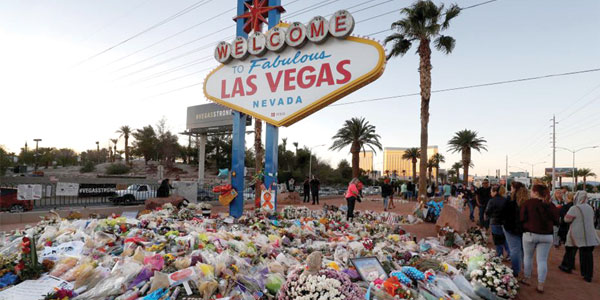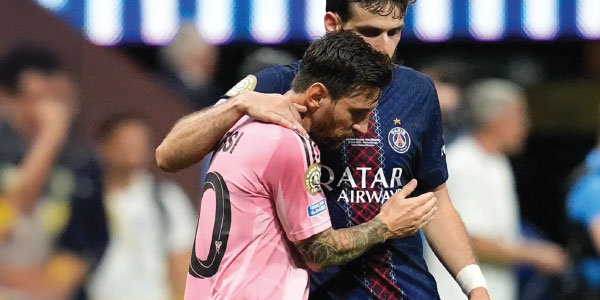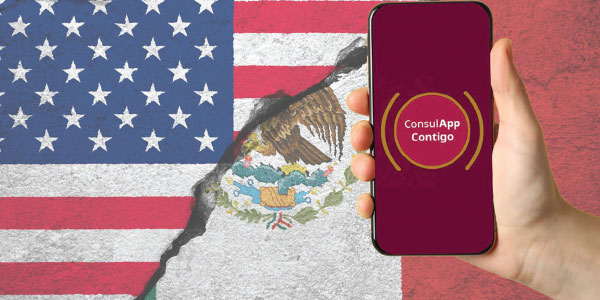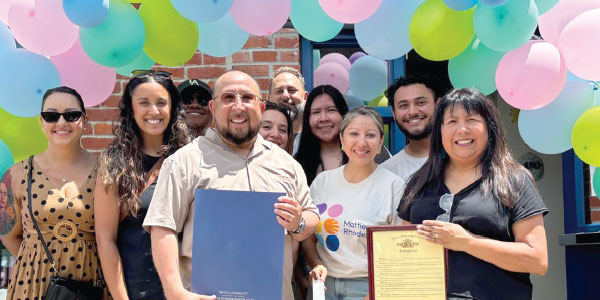
I am horrified by how easy it was for Stephen Paddock to kill so many people in Las Vegas earlier this month. After apparently carrying loads of weapons up to his hotel room, he smashed out two windows and then, as if he were at a firing range, aimed at a crowd of 22,000 people gathered below for an outdoor concert.
Killing is very easy in the United States.
Everybody knows that the nation is dangerously in love with guns. The U.S. has more weapons than residents, and a cursory online search shows that there are 112 firearms here for every 100 inhabitants.
Logic and reason would suggest that the more handguns and rifles there are on the street, the easier it is for them to be used to kill. But that logic has never been persuasive enough for Congress to do anything about the wide availability of firearms here. Shooting after shooting, massacre after massacre, legislators refuse to do anything about guns.
In 2015, 13,500 people died after being shot in the U.S. In the same year, only one person was shot dead in Japan, according to a report quoted by The Washington Post. Only one!
Why the huge difference? Perhaps because in Japan, it’s very difficult to obtain a firearm. There, killing with a gun is not easy — fewer than 1 in 100 Japanese residents own one.
Earlier this year, the BBC chronicled the steps that Japanese citizens must take before buying a gun. In addition to taking classes on firearm use, they must pass a written exam and a shooting-range test with a mark of at least 95%, pass a police background check and have no connections to any extremist groups (relatives and work colleagues will be checked as well). Licenses are valid for three years, then gun owners must submit to this process again.
Japan provides a good example of how gun-related homicides can be reduced dramatically if access to firearms is restricted. Why can’t we do it in the United States? Americans’ Second Amendment rights can be protected, but so can the lives of other people. This necessary balance is now broken, and shootings have become a dreadfully common occurrence.
I believed in 2012 that after the Sandy Hook Elementary School shooting in Connecticut, in which 20 children and six adults were killed, that things would change. Nothing happened. I thought that after the Pulse nightclub shooting in Florida, in which 49 people were killed, there would be a nationwide push to limit access to firearms. It didn’t happen. Now, after the Las Vegas shooting, the worst ever recorded in U.S. history, we’re again wondering if something will change. But we know that nothing will. We’ve become immune.
Outside U.N. headquarters in New York stands an amazing sculpture, a gift from the government of Luxembourg in 1988. It features an enormous pistol with its barrel twisted into a knot. It represents, to me, a desire to control violence. But I don’t see that desire anywhere in the United States. This country refuses to learn the simplest and most obvious of lessons: Fewer firearms mean fewer killings.
After a shooting, politicians will do absolutely nothing, weapons designed to be used in war will continue to be used by the public, and then we’ll forget about it all in a couple of weeks. Until the next massacre. This is the new normal.
President Trump, for whom nothing has turned out well in the past several months, will not open up a new battlefront to limit firearms. Besides, the domestic terrorist attack in Las Vegas undercuts his narrative that it is immigrants who pose the real danger.
I was horrified at how easily Paddock murdered his victims, and continue to be horrified at the political establishment’s refusal to do anything that might prevent another shooting. It’s just so easy to kill here.
(P.S. about paper towels: President Trump showed a complete lack of respect while visiting Puerto Rico earlier this month when he tossed rolls of paper towels into a crowd of hurricane victims. Will Puerto Rican voters remember this when he seeks re-election in 2020?)
(Jorge Ramos, an Emmy Award-winning journalist, is a news anchor on Univision. Originally from Mexico and now based in Florida, Ramos is the author of several best-selling books. His latest is “Take a Stand: Lessons From Rebels.” Email him at jorge.ramos@nytimes.com.)
_____________________________________________________________________________________
Matar Es Fácil
Estoy aterrado con lo fácil que fue para Stephen Paddock matar a tantas personas en Las Vegas. Acumuló un montón de armas en su cuarto de hotel, rompió dos ventanas y luego, como en un campo de tiro, se puso a disparar a las 22 mil personas que asistían a un concierto al aire libre.
Matar es muy fácil en Estados Unidos.
No hay ninguna disputa de que en este país hay un peligroso enamoramiento con máquinas que te matan. En Estados Unidos existen más armas que habitantes; hay 112 armas de fuego por cada 100 habitantes, según un rápido vistazo en línea.
El argumento es muy sencillo: Mientras más pistolas y rifles existan, más fácil es que se usen para matar. Pero esta lógica nunca ha podido convencer al congreso de Estados Unidos. Matanza tras matanza, los congresistas se rehúsan a hacer algo al respecto. Hay mucho dinero de por medio.
Vamos al ejemplo. En el 2015 fueron asesinadas 13,500 personas con armas de fuego en Estados Unidos. Y en ese mismo año sólo una persona fue asesinada de la misma manera en Japón, según un reporte citado por el Washington Post. ¡Una!
¿Por qué esta enorme diferencia? Porque en Japón es muy difícil obtener una arma de fuego. Matar ahí es difícil; menos de una de cada 100 personas posee un arma.
Un reporte de la BBC (bbc.in/2jjeMzM) enumera todo lo que tiene que hacer un civil japonés para comprar una pistola: tomar clases durante varios días, aprobar un examen, acertar 95% en una prueba de tiro, pasar una revisión de antecedentes penales y de posibles contactos con terroristas y superar una investigación de familiares y compañeros de trabajo. El permiso sólo dura tres años y, luego, hay que volver a hacerlo todo. Japón ha demostrado que se pueden reducir drásticamente el número de asesinatos si complicamos y limitamos el acceso a las armas de fuego.
¿Por qué no se puede hacer algo así en Estados Unidos? Se puede perfectamente respetar la Segunda Enmienda de la Constitución — que garantiza el portar armas de fuego — y, al mismo tiempo, proteger la vida de todos los que vivimos en este país. Pero ese balance está roto.
Las masacres se han convertido en algo casi cotidiano. Creía, equivocadamente, que tras el asesinato de 20 niños y seis adultos en la escuela Sandy Hook de Connecticut en el 2012 las cosas cambiarían. Pero no pasó nada. Pensé que tras el tiroteo en la discoteca Pulse de Orlando, donde murieron 49 personas el año pasado, surgiría un movimiento nacional para limitar el uso de armas. No ocurrió. Y ahora tras la matanza en Las Vegas — la peor en la historia de Estados Unidos — tampoco pasará nada. En Estados Unidos nos hemos vuelto inmunes a las matanzas.
En el patio de una de las entradas al edificio de Naciones Unidas en Nueva York hay una escultura extraordinaria, regalo del gobierno de Luxemburgo en 1988.
Es una enorme pistola cuyo cañón termina en un nudo. Significa, para mí, el deseo de controlar la violencia.
Pero yo no veo ese deseo en ninguna parte en Estados Unidos. Este país se rehúsa a aprender la lección más obvia y sencilla: Menos armas significan menos asesinatos. La nueva normalidad estadounidense es esta: Los políticos no van a hacer absolutamente nada, en las calles se podrán seguir utilizando armamento de guerra y, de vez en cuando, tendremos una masacre a la que los noticieros le dedicarán todo su tiempo hasta olvidarlas en una o dos semanas.
El gobierno de Donald Trump — al que nada le ha salido bien en sus primeros meses en la Casa Blanca — jamás abriría un nuevo frente de batalla para limitar las armas. Además, el acto de terrorismo doméstico en Las Vegas va en contra de su narrativa de que los inmigrantes son el verdadero peligro para este país.
Quedé aterrado con la facilidad con la que Paddock asesinó a sus víctimas y con la absoluta negativa de Trump y de la clase política de hacer algo para evitar otra matanza. Es demasiado fácil matar aquí.
(Posdata de papel toalla: El presidente Trump demostró una total falta de respeto en Puerto Rico cuando arrojó papel toalla a los damnificados del huracán. ¿Se acordarán de esto los votantes puertorriqueños cuando Trump busque la reelección en el 2020?)
(Jorge Ramos, periodista ganador del Emmy, es el principal director de noticias de Univision Network. Ramos, nacido en México, es autor de nueve libros de grandes ventas, el más reciente de los cuales es “A Country for All: An Immigrant Manifesto.”)










